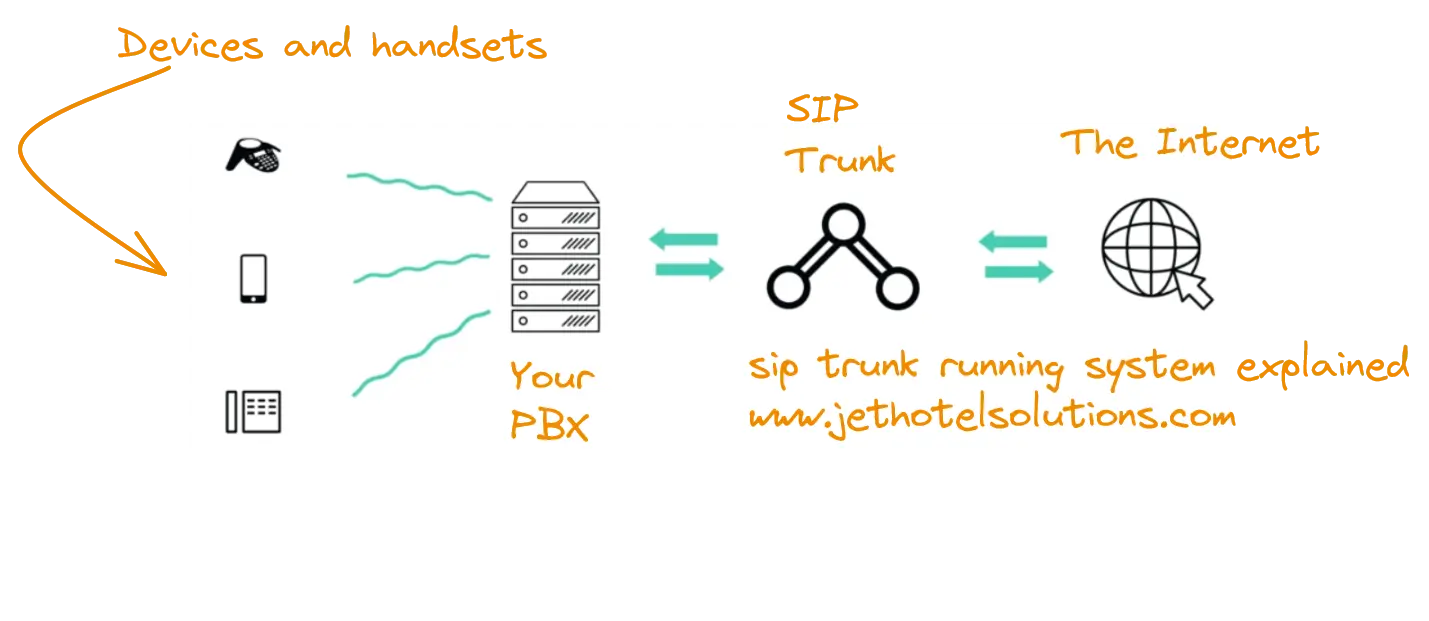For decades, analog phone lines served as the tried-and-true method for connecting business phone systems. But in today’s mobile-first world, reliance on antiquated copper feels outdated. Enter SIP trunking – a flexible modern replacement for analog lines. Here’s a closer look at the advantages of SIP trunking and why it’s time for enterprises to upgrade.
The Analog System Legacy
Since Alexander Graham Bell’s first call in 1876, communications meant analog phone technology. This involved converted sound waves transmitted as electrical signals over copper wires laid across cities and towns. Phone companies connected businesses to the broader public switched telephone network (PSTN) to enable calls over the shared infrastructure.
To deliver service, a business would order a number of analog phone lines, or “trunks.” These physical pairs of copper wires would plug into a private branch exchange (PBX) phone system. This enabled the PBX to connect workers internally while allowing external calls over the analog lines.
For decades, this PSTN model hummed along without change as the core of business telephony. Companies planning growth had to order enough trunks to handle anticipated call volumes. But first weighing the pros and cons of analog technology.
The High Cost of Analog Access
Analog has the advantage of proven reliability and consistent audio quality when running as designed. The infrastructure stands the test of time, having successfully connected calls for over a century. And analog lines continue to be maintained and delivered by incumbent telephone companies.
But analog technology has its downsides. Cost stands out as the major one – analog trunk rates often run around $30-50 per line monthly. And one trunk can only handle a single call at a time. So companies wind up overbuying capacity for peak demand periods. This means paying constantly for unused analog lines sitting idle.
Analog systems also carry high per-minute long distance fees. To transmit signals across regions, calls pass through multiple third-party toll switches. Each charges network access fees that quickly compound cost. International calls ratchet up even quicker in most cases.
SIP Trunking Delivers Voice on Demand
Unlike the fixed analog line model, SIP trunking provides connectivity directly over a company’s broadband data connection. This allows PBX systems to bypass analog line requirements completely. Instead, calls get handled as digital voice traffic on the corporate IP network.
SIP stands for Session Initiation Protocol – a method for establishing real-time communications. By serving as a standard for call signaling and management, SIP enables voice to be delivered cost-effectively as packets over any IP network. This unshackles businesses from relying on rigid analog infrastructure.
On the backend, SIP providers connect to the PSTN through optimized VoIP gateway architecture. This bridges modern SIP systems to reach traditional phone numbers while controlling costs better than legacy phone companies. Calls stay digital end-to-end instead of relying on dated analog.
Dropping Costs by Leaving Analog Behind
One major advantage of SIP trunking is reduced telephony spend overall. With software controlling connectivity instead of physical infrastructure, line costs drop significantly. SIP essentially delivers “lines-on-demand”, scaling call capacity dynamically while only charging for what’s utilized.
This means no longer overbuying analog circuits to account for peak demand spikes. SIP systems allow easily bursting above the set capacity whenever momentary spikes occur. Companies pay incremental fees just for this short burst period before dropping back down.
Long distance rates also plummet compared to analog telco plans. SIP providers leverage least-cost routing over modern VoIP infrastructure. This allows bundling US/Canada calling into one SIP trunk flat rate. International calls reach near wholesale pricing due to massive traffic scale and optimization.
Making the Switch to SIP Connectivity
Upgrading from analog trunks represents a chance for companies to optimize communications and enhance responsiveness through modern voice systems. The benefits range from cutting costs to improving functionality. And SIP makes it easy by leveraging existing broadband infrastructure.
But careful planning still remains essential for execution. As with any new technology, moving to SIP trunking works best when relying on qualified partners. By getting the configuration right upfront, enterprises can gradually phase out legacy analog smoothly while maximizing ROI on their connectivity investment now and into the future. The analog days are over – for any company still relying on copper, it’s time to take the SIP.

